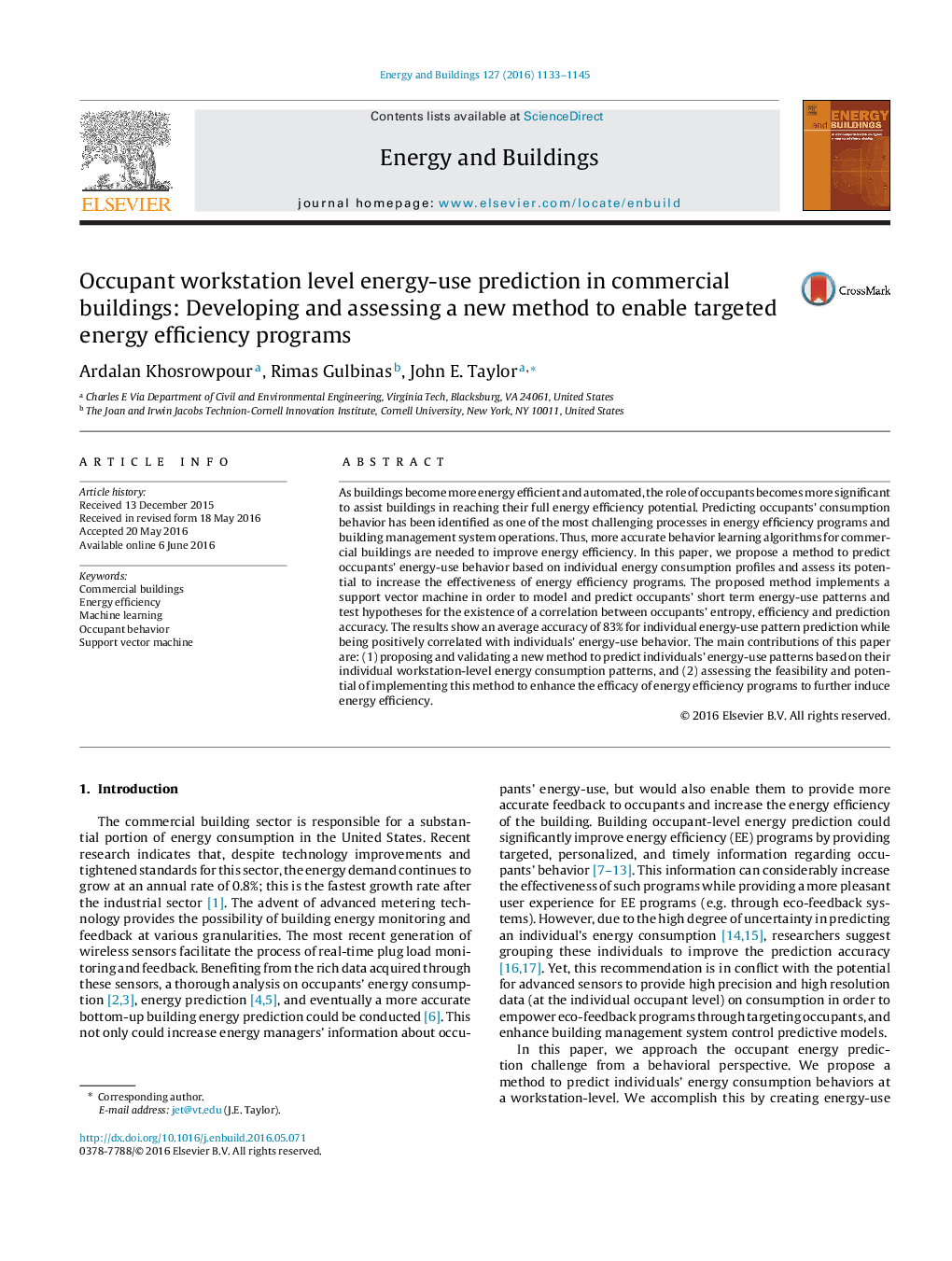| کد مقاله | کد نشریه | سال انتشار | مقاله انگلیسی | نسخه تمام متن |
|---|---|---|---|---|
| 262053 | 504007 | 2016 | 13 صفحه PDF | دانلود رایگان |
• We examined occupant workstation energy consumption in a commercial building.
• We propose a method to predict occupant energy use using consumption profiles.
• We implement a support vector machine to predict energy-use patterns.
• Resulted in mean accuracy of 83% for individual energy use pattern prediction.
• This contributes a validated method to predict occupant energy use patterns.
As buildings become more energy efficient and automated, the role of occupants becomes more significant to assist buildings in reaching their full energy efficiency potential. Predicting occupants’ consumption behavior has been identified as one of the most challenging processes in energy efficiency programs and building management system operations. Thus, more accurate behavior learning algorithms for commercial buildings are needed to improve energy efficiency. In this paper, we propose a method to predict occupants’ energy-use behavior based on individual energy consumption profiles and assess its potential to increase the effectiveness of energy efficiency programs. The proposed method implements a support vector machine in order to model and predict occupants’ short term energy-use patterns and test hypotheses for the existence of a correlation between occupants’ entropy, efficiency and prediction accuracy. The results show an average accuracy of 83% for individual energy-use pattern prediction while being positively correlated with individuals’ energy-use behavior. The main contributions of this paper are: (1) proposing and validating a new method to predict individuals’ energy-use patterns based on their individual workstation-level energy consumption patterns, and (2) assessing the feasibility and potential of implementing this method to enhance the efficacy of energy efficiency programs to further induce energy efficiency.
Journal: Energy and Buildings - Volume 127, 1 September 2016, Pages 1133–1145
